- Clone
- J418F1 (See other available formats)
- Regulatory Status
- RUO
- Other Names
- C-C chemokine receptor type 5 (CCR5), HIV-1 fusion co-receptor
- Isotype
- Rat IgG2b, κ
- Barcode Sequence
- CCAAAGTAAGAGCCA
- Ave. Rating
- Submit a Review
- Product Citations
- publications
| Cat # | Size | Price | Quantity Check Availability | Save | ||
|---|---|---|---|---|---|---|
| 359141 | 10 µg | £253 | ||||
CD195, also known as CCR5, is a 45 kD G protein-coupled seven transmembrane CC-chemokine receptor. It binds to MIP-1α, MIP-1β, and RANTES and is expressed on a subset of T cells and monocytes. CCR5 mediates an intracellular signal thought to induce cell differentiation and proliferation. CCR5 has also been shown to act as a co-receptor for R5 HIV-1 cell entry; modification of CCR5 by sulfation contributes to the efficiency of HIV-1 entry. Studies have shown CCR5 to play a role in a variety of other human diseases, ranging from infectious and inflammatory diseases to cancer.
Product DetailsProduct Details
- Verified Reactivity
- Human
- Antibody Type
- Monoclonal
- Host Species
- Rat
- Immunogen
- Human CCR5 transfectants
- Formulation
- Phosphate-buffered solution, pH 7.2, containing 0.09% sodium azide and EDTA
- Preparation
- The antibody was purified by chromatography and conjugated with TotalSeq™-D oligomer under optimal conditions.
- Concentration
- 0.5 mg/mL
- Storage & Handling
- The antibody solution should be stored undiluted between 2°C and 8°C. Do not freeze.
- Application
-
PG - Quality tested
- Recommended Usage
-
Each lot of this antibody is quality control tested by immunofluorescent staining with flow cytometric analysis and the oligomer sequence is confirmed by sequencing. TotalSeq™-D antibodies are compatible with Mission Bio’s Tapestri Single-Cell Sequencing Platform for simultaneous detection of DNA and Protein.
To maximize performance, it is strongly recommended that the reagent be titrated for each application, and that you centrifuge the antibody dilution before adding to the cells at 14,000xg at 2 - 8°C for 10 minutes. Carefully pipette out the liquid avoiding the bottom of the tube and add to the cell suspension. For Proteogenomics analysis, the suggested starting amount of this reagent for titration is ≤ 1.0 µg per million cells in 100 µL volume. Refer to the corresponding TotalSeq™ protocol for specific staining instructions.
Buyer is solely responsible for determining whether Buyer has all intellectual property rights that are necessary for Buyer's intended uses of the BioLegend TotalSeq™ products. For example, for any technology platform Buyer uses with TotalSeq™, it is Buyer's sole responsibility to determine whether it has all necessary third party intellectual property rights to use that platform and TotalSeq™ with that platform. - Additional Product Notes
-
TotalSeq™-D reagents are designed to profile protein expression at single cell level. The Mission Bio Tapestri platform and sequencer (e.g. Illumina analyzers) are required. Please contact technical support for more information, or visit biolegend.com/totalseq/single-cell-dna
The barcode flanking sequences are CGAGATGACTACGCTACTCATGG (PCR handle), and GAGCCGATCTAGTATCTCAGT*C*G (capture sequence). * indicates a phosphorothioated bond, to prevent nuclease degradation.
View more applications data for this product in our Application Technical Notes. - RRID
-
AB_2894570 (BioLegend Cat. No. 359141)
Antigen Details
- Structure
- G-coupled receptor family 1, membrane protein, 45 kD
- Distribution
-
Subset of T cells, monocytes
- Function
- Binds C-C chemokines and transduces an intracellular signal thought to result in proliferation and differentiation, acts as a co-receptor with CD4 for HIV-1
- Ligand/Receptor
- MIP-1α, MIP-1β, RANTES
- Cell Type
- Monocytes, T cells
- Biology Area
- Cell Biology, Immunology, Innate Immunity, Neuroinflammation, Neuroscience
- Molecular Family
- CD Molecules, Cytokine/Chemokine Receptors, GPCR
- Antigen References
-
1. Samson M, et al. 1996. Biochemistry 35:3362.
2. Raport CJ, et al. 1996. J. Biol. Chem. 271:17161.
3. Combadiere C, et al. 1996. J. Leukoc. Biol. 60:147.
4. Deng H, et al. 1996. Nature 381:661.
5. Lai J, et al. 2003. CVI. 10:1123.
6. Mañes S, et al. 2003. J. Exp. Med. 198:1381.
7. Vaday GG, et al. 2006. Prostate 66:124. - Gene ID
- 1234 View all products for this Gene ID
- UniProt
- View information about CD195 on UniProt.org
Related FAQs
- Does staining at room temperature or even at 37°C help for checking chemokine receptors expression?
-
Due to continuous recycling of many chemokine receptors, it may be worthwhile to consider staining at room temperature or at 37°C if the staining at lower temperature (which can potentially reduce receptor turnover) is not optimal.
Other Formats
View All CD195 Reagents Request Custom ConjugationCompare Data Across All Formats
This data display is provided for general comparisons between formats.
Your actual data may vary due to variations in samples, target cells, instruments and their settings, staining conditions, and other factors.
If you need assistance with selecting the best format contact our expert technical support team.
-
Purified anti-human CD195 (CCR5)
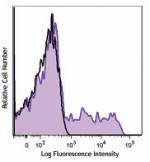
Human peripheral blood lymphocytes were stained with purifie... -
Alexa Fluor® 488 anti-human CD195 (CCR5)
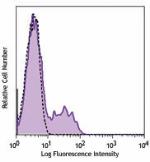
Human peripheral blood lymphocytes were stained with CD195 (... -
PE anti-human CD195 (CCR5)

Human peripheral blood lymphocytes were stained with CD195 (... -
PE/Cyanine7 anti-human CD195 (CCR5)
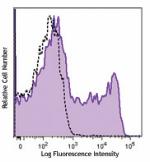
Human peripheral blood lymphocytes were stained with CD195 (... -
APC/Cyanine7 anti-human CD195 (CCR5)

Human peripheral blood lymphocytes were stained with CD4 FIT... -
PerCP/Cyanine5.5 anti-human CD195 (CCR5)

Human peripheral blood lymphocytes were stained with CD4 APC... -
Alexa Fluor® 647 anti-human CD195 (CCR5)
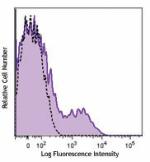
Human peripheral blood lymphocytes were stained with CD195 (... -
Alexa Fluor® 700 anti-human CD195 (CCR5)
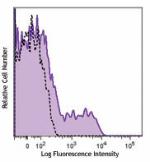
Human peripheral blood lymphocytes were stained with CD195 (... -
Brilliant Violet 421™ anti-human CD195 (CCR5)
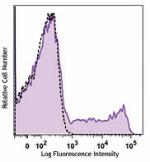
Human peripheral blood lymphocytes were stained with CD195 (... -
FITC anti-human CD195 (CCR5)
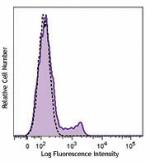
Human peripheral blood lymphocytes were stained with CD195 (... -
Pacific Blue™ anti-human CD195 (CCR5)
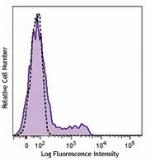
Human peripheral blood lymphocytes were stained with CD195 (... -
PE/Dazzle™ 594 anti-human CD195 (CCR5)
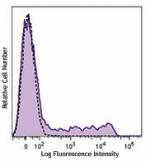
Human peripheral blood lymphocytes were stained with CD195 (... -
APC anti-human CD195 (CCR5)
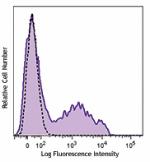
Human peripheral blood lymphocytes were stained with CD195 (... -
Brilliant Violet 510™ anti-human CD195 (CCR5)
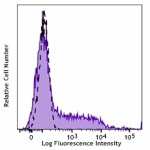
Human peripheral blood lymphocytes were stained with CD195 (... -
Brilliant Violet 711™ anti-human CD195 (CCR5)
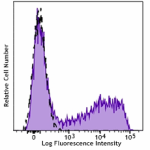
Human peripheral blood lymphocytes were stained with CD195 (... -
APC/Fire™ 750 anti-human CD195 (CCR5)
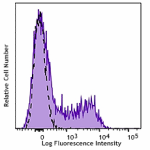
Human peripheral blood lymphocytes were stained with CD195 (... -
Brilliant Violet 785™ anti-human CD195 (CCR5)

Human peripheral blood lymphocytes were stained with CD195 (... -
TotalSeq™-A0141 anti-human CD195 (CCR5)
-
TotalSeq™-C0141 anti-human CD195 (CCR5)
-
TotalSeq™-B0141 anti-human CD195 (CCR5) Antibody
-
TotalSeq™-D0141 anti-human CD195 (CCR5)
-
PE/Cyanine5 anti-human CD195 (CCR5)

Human peripheral blood lymphocytes were stained with anti-hu... -
Brilliant Violet 605™ anti-human CD195 (CCR5)

Human peripheral blood lymphocytes were stained with ani-hu... -
Brilliant Violet 650™ anti-human CD195 (CCR5)

Human peripheral blood lymphocytes were stained with anti-hu... -
PerCP/Fire™ 806 anti-human CD195 (CCR5)

Human lysed whole blood cells were stained with anti-human C...

 Login / Register
Login / Register 













Follow Us